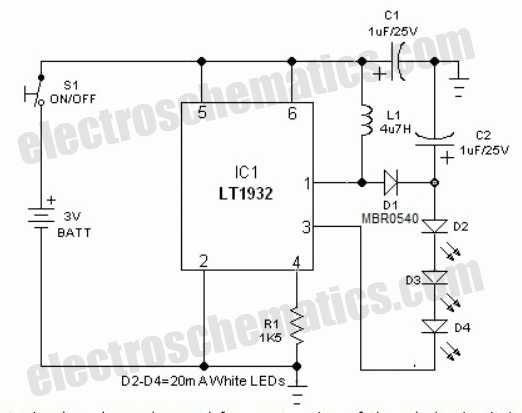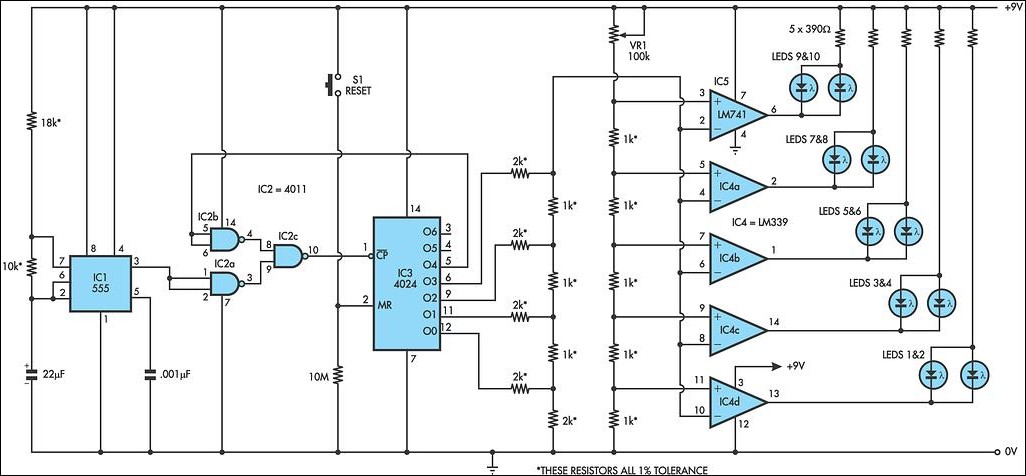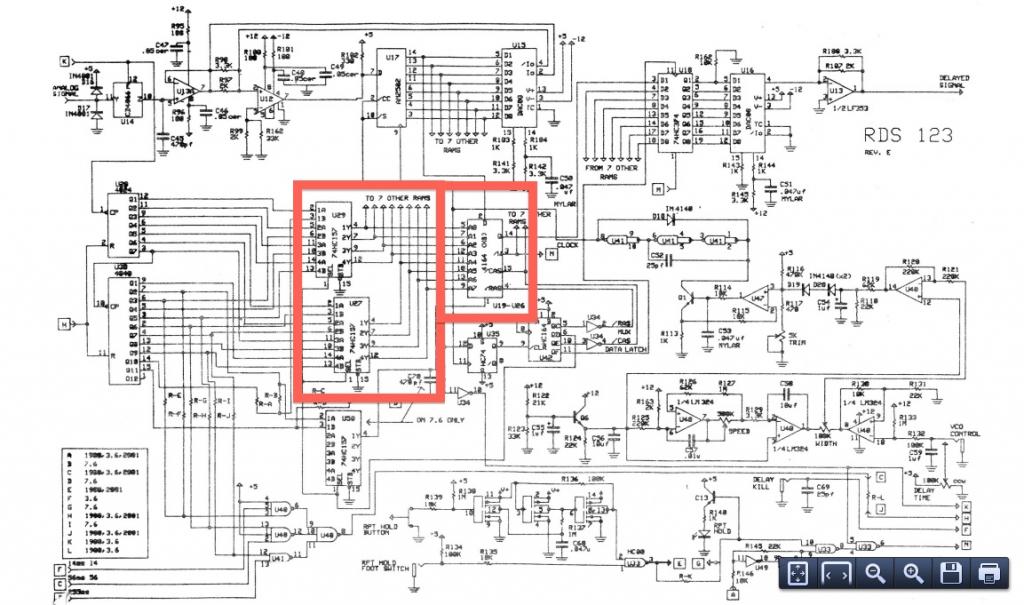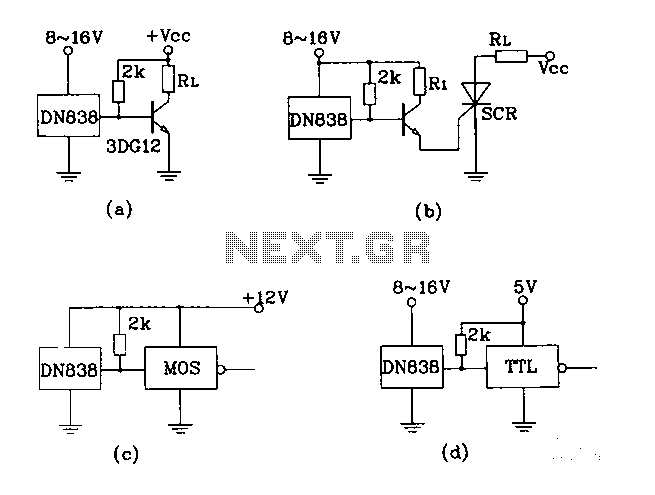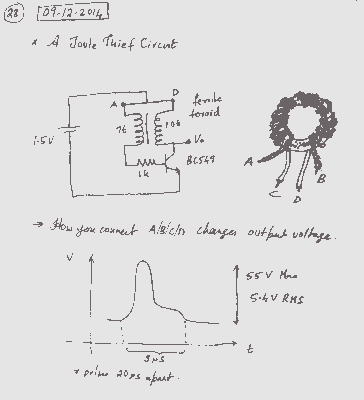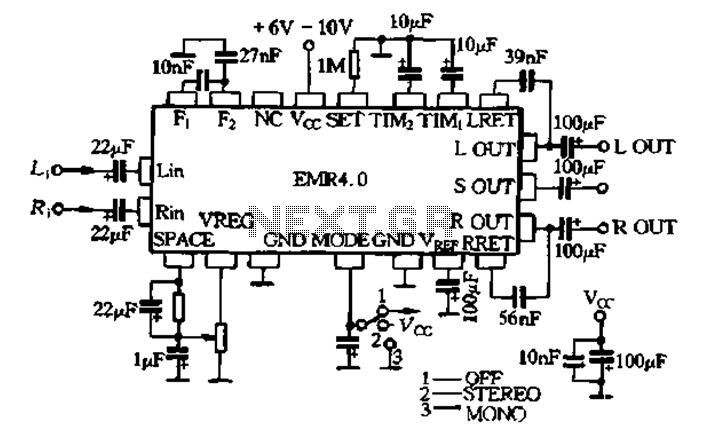
Pest Repeller Circuit

The two timers in the bug repeller exhibit notable characteristics. Both have their thresholds set externally; the oscillator on the left operates with a 50% duty cycle, while the oscillator on the right functions as a voltage-controlled oscillator (VCO).
The bug repeller circuit utilizes two distinct timer configurations, each contributing to its overall functionality. The left oscillator, characterized by its 50% duty cycle, generates a square wave signal where the on-time is equal to the off-time. This balanced duty cycle is essential for producing a consistent frequency output, which can be adjusted by altering the external resistors and capacitors connected to the timer. This configuration ensures that the bug repeller emits a stable signal that can effectively disrupt the behavior of insects.
In contrast, the right oscillator operates as a voltage-controlled oscillator (VCO). This type of oscillator allows the output frequency to be modulated based on an input voltage. By varying the control voltage applied to the VCO, the frequency of the output signal can be dynamically adjusted. This feature adds versatility to the bug repeller, enabling it to adapt its frequency to target different types of pests or environmental conditions.
Both oscillators are integral to the operation of the bug repeller, allowing it to generate ultrasonic frequencies that are unpleasant to insects while remaining inaudible to humans. The external threshold settings for both timers provide a means to calibrate the circuit for optimal performance, ensuring that the emitted frequencies are effective in deterring pests while minimizing potential interference with other electronic devices. The design of the circuit emphasizes flexibility and adaptability, making it a practical solution for pest control applications. The two timers in the bug repeller have some interesting characteristics. Roth of them have their thresholds externally set; the oscillator on the left has a 50% duty cycle and the oscillator on the right acts as a VCO. 🔗 External reference
The bug repeller circuit utilizes two distinct timer configurations, each contributing to its overall functionality. The left oscillator, characterized by its 50% duty cycle, generates a square wave signal where the on-time is equal to the off-time. This balanced duty cycle is essential for producing a consistent frequency output, which can be adjusted by altering the external resistors and capacitors connected to the timer. This configuration ensures that the bug repeller emits a stable signal that can effectively disrupt the behavior of insects.
In contrast, the right oscillator operates as a voltage-controlled oscillator (VCO). This type of oscillator allows the output frequency to be modulated based on an input voltage. By varying the control voltage applied to the VCO, the frequency of the output signal can be dynamically adjusted. This feature adds versatility to the bug repeller, enabling it to adapt its frequency to target different types of pests or environmental conditions.
Both oscillators are integral to the operation of the bug repeller, allowing it to generate ultrasonic frequencies that are unpleasant to insects while remaining inaudible to humans. The external threshold settings for both timers provide a means to calibrate the circuit for optimal performance, ensuring that the emitted frequencies are effective in deterring pests while minimizing potential interference with other electronic devices. The design of the circuit emphasizes flexibility and adaptability, making it a practical solution for pest control applications. The two timers in the bug repeller have some interesting characteristics. Roth of them have their thresholds externally set; the oscillator on the left has a 50% duty cycle and the oscillator on the right acts as a VCO. 🔗 External reference
